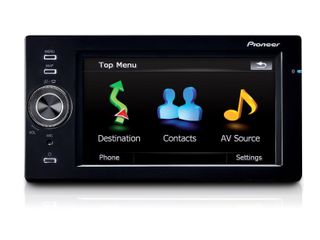
Forget the tabloid horror stories, sat navs are a genuinely useful addition to any traveller's armoury - whether you're setting out by car, by bike or on foot.
They can shave precious minutes off your journey time, help you avoid traffic snarl-ups and even point you in the direction of your nearest petrol station (or bar). And they make a great gift for Christmas, too. To help you decide which one to buy, here's your guide to the latest, greatest devices and features.
Permanent or portable?
Most of us are familiar with portable or personal sat-nav devices that can be moved from car to car, but have you thought of the alternative? Companies like Alpine, Becker and Pioneer all sell sat-nav devices that are designed to be permanently installed into your car - handy if you use only one motor.
Permanent installs usually come with bigger and better displays, can be seamlessly integrated with other car functions - like the lights and stereo - and can carry all the map data (usually in a box underneath the driver's seat) you're ever likely to need in just one place.
They'll also save you hassle of lugging a sat nav around in the first place along with associated cables, memory cards and windscreen mounts, but they can be a lot more expensive.
Portable sat-nav devices from the likes of TomTom, Navman, Navigon, and Garmin make sense, of course, if you often change vehicles or don't want to install a pricey permanent job in a company car.
They can also help you find your way around town on foot - although the usefulness of this feature is rapidly being supplanted by GPS navigation in mobile phones.
The other option is to plump for some kind of hybrid that offers the best of both worlds. Pioneer's AVIC-F500BT (£500) does exactly that, combining navigation and entertainment
Where do you want to go today?
While it's tempting to buy the best sat nav you can afford, you also need to think about the features the recipient of your Christmas gift will actually use, especially when it comes to built-in maps.
The range-topping TomTom GO 940 Live (£450), for example, includes maps for Western and Eastern Europe, the USA and Canada - but unless you actually go to any of these places on a regular basis, it's probably not worth paying the premium over other models in the range that just have UK or Western European maps only.
The UK-and-Ireland-only TomTom GO 530 T, for example, costs just £250 - a £200 saving over the top-end model. You can always buy additional maps if you need them.
Who makes the maps?
No matter which sat nav you buy, chances are the map data inside it has come from one of two companies - Navteq, which is now owned by Nokia; and TeleAtlas, now owned by TomTom.
The accuracy of the map data available to your device is then largely due to them, which annual - or monthly updates, in some cases - passed on to you via an annual subscription. Add-ons like traffic data, etc are usually supplied by the sat nav companies themselves or through partnerships with third-parties.
Captured on camera?
It comes to something when even your granny can get zapped by a speed camera nowadays, which is why almost all sat nav companies offer some kind of safety camera update service.
These help keep you one step ahead of the law ensure you drive at appropriate speeds at all times, so avoiding penalty points and higher insurance premiums.
You can subscribe to safety camera update for a relatively small annual fee, or buy them as part of a bundle of services, such as TomTom's LIVE. Definitely worth signing up for.
A little something extra, sir?
Alongside safety cameras updates, most sat nav makers offer a range of additional services that either a) help you get the most from your sat nav or are b) are a complete waste of money, depending on your point of view.
TomTom, for example, offers no less than 15 different payable options ranging from real time traffic updates to points of interest.
Sign up for them all and things can get pretty expensive. Your best bet is to take advantage of any time-limited trials - usually offered when you first buy a sat nav - to see which ones are likely to work best for you.
Music and photos to go
We're yet to be convinced that storing music and (even capturing) photos on a sat-nav device is anything other than a novelty, despite sat nav makers claims to the contrary.
The ability to store music - or even movies - seems especially perverse given that most of us own iPods, car stereos or both already, so it's probably not a feature you should give much credence too.
We can see a teensy advantage to the Navman's ability to shoot and add photo to key locations using its built-in digital camera (the feature's called NavPix). But we'd rather have a built-in coffee machine, traffic light changer or road rage avoider.
Is there anything we've missed? What do you love / hate about the sat nav you own? Write in and let us know - and add your comments below!
Get daily insight, inspiration and deals in your inbox
Get the hottest deals available in your inbox plus news, reviews, opinion, analysis and more from the TechRadar team.
